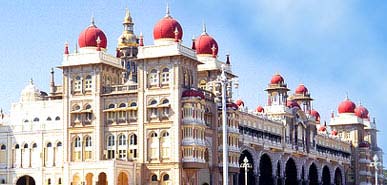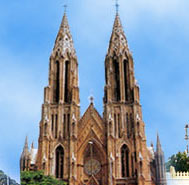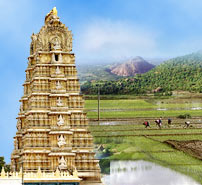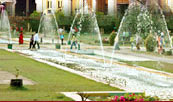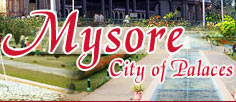Another attraction in the historical city of Mysore
is the Regional Museum of Natural History that was inaugurated on 20th
May 1995. The museum is located on the banks of the Karanji Lake with
the Chamundi hills as its backdrop. This museum gives its visitors an
opportunity to explore and understand nature and the natural world. The
museum uses models, audio-visual aids, and thematic, interactive and
participatory exhibits to help the visitor understand the natural world.
These exhibits make learning an interesting and enjoyable experience.
Another attraction in the historical city of Mysore is the Regional
Museum of Natural History that was inaugurated on 20th May 1995. The
museum is located on the banks of the Karanji Lake with the Chamundi
hills as its backdrop. This museum gives its visitors an opportunity to
explore and understand nature and the natural world. The museum uses
models, audio-visual aids, and thematic, interactive and participatory
exhibits to help the visitor understand the natural world. These
exhibits make learning an interesting and enjoyable experience
The main objectives of the Museum are:
1. To provide information about the fauna, flora and geological wealth
of south India.
2. To inform visitors of the ecological interrelationship among plants
and animals and highlighting the importance of conservation nature and
natural resources.
3. To provide students with an out of school facility on curriculum
based studies in biology and geology with special emphasis on the
environmental aspect.
4. To develop programmes to increase environmental awareness among the
common people.
Exhibit galleries: The museum has exhibit galleries dealing with
Biological Diversity, Life through the Ages, Ecology, Conservation for
Development and Man and the Environment.
Biological Diversity:
This gallery deals with an overview of the biodiversity of South India,
with special reference to the Western Ghats. This section deals with
basic concepts of natural history, plants and animals and some
endangered species of plants and animals and with the geography and
geology of the southern region. It also deals with the rain forest,
wetlands and mangrove forest and ends with a huge exhibit against the
willful destruction of nature.
Life through the Ages:
This section deals with the evolution of man. This is presented in an
interesting manner through a walk-through tunnel, where the evolution of
man is depicted in the tunnel and the tunnel ends with the evolution of
modern man.
Discovery Centre:
This is the interactive section of the museum, where visitors can
choose one or many of the activities provided. This section consists of
the Discovery Room, Computer Room, Vivarium and a mini Weather Station.
Discovery Room In this room visitors can handle, examine and study
specimens. It has a mini theater, a bioscience lab and a sound both etc.
This room allows children to learn things in a creative manner.
Bioscience Computer Room:
This room is meant for high school and college students as it allows
them to understand biology-using computers. The Multimedia facility
makes learning a new experience as visitors learn about nature using
interactive facilities. The exhibits that are displayed in the museum
are a good combination of models and audio visual aids. The museum
authorities periodically organize workshops relating to protecting the
environment, preservation of wildlife and camps for students and nature
enthusiasts. They also arrange film shows on topics related to natural
history. Admission to the museum is free.
